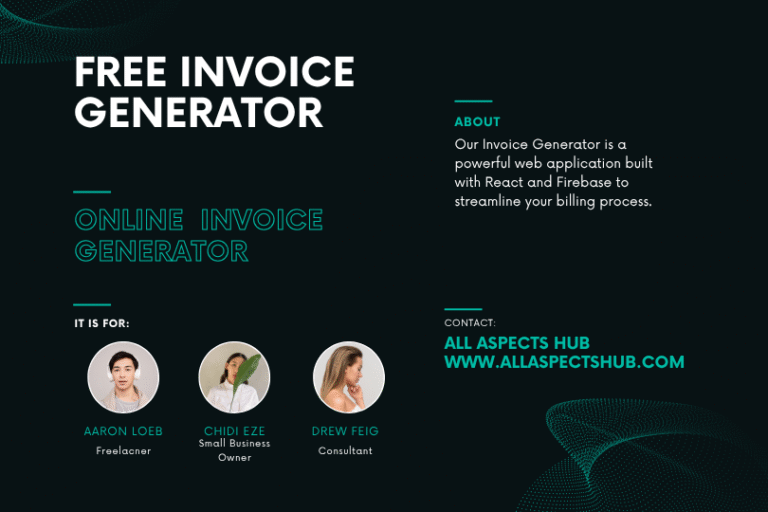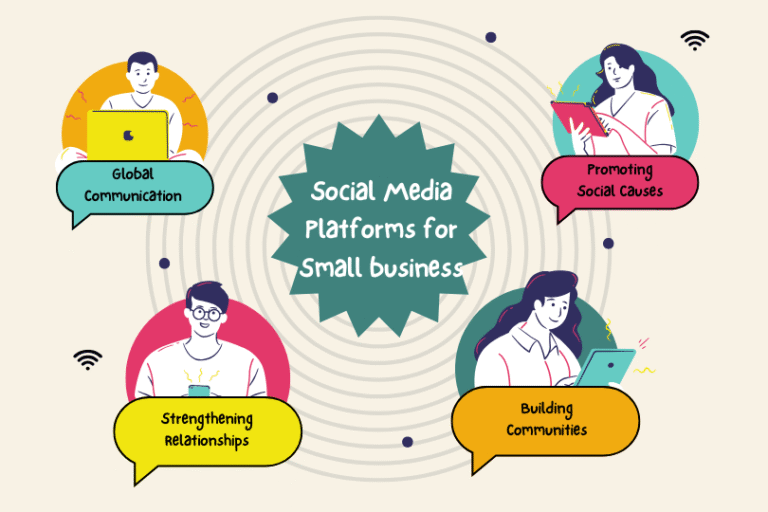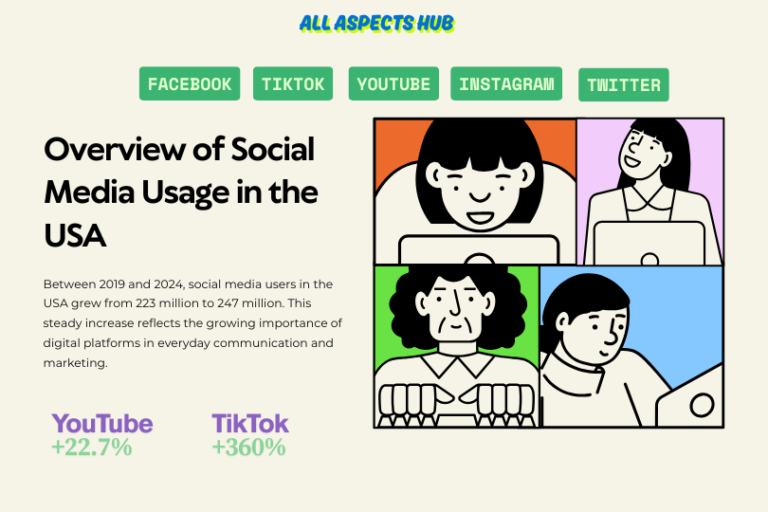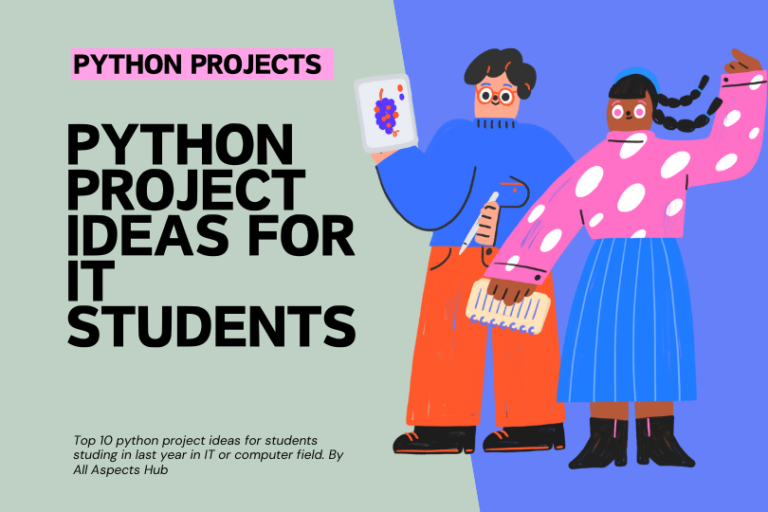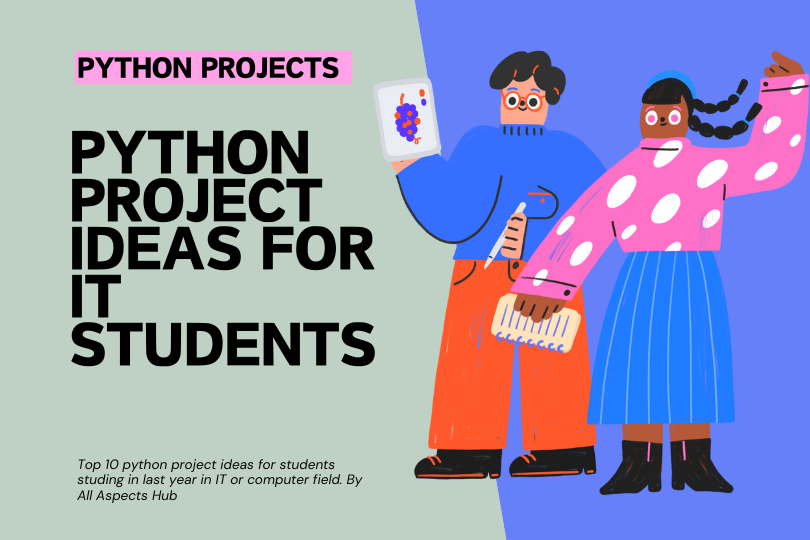
python project ideas
Introduction To Python Projects
Choosing the right final year project is one of the most crucial decisions you’ll make as an IT or Computer Science student. Your final year project serves as the bridge between theoretical knowledge and practical application, showcasing your programming skills to potential employers while solidifying your understanding of software development concepts. In today’s technology landscape, Python has emerged as one of the most versatile and in-demand programming languages, making it an excellent choice for impactful final year projects.
This comprehensive guide is designed for final year Information Technology and Computer Science students, aspiring developers, and academic advisors seeking innovative project ideas. Whether you’re looking to strengthen your portfolio or demonstrate your technical capabilities, Python offers unparalleled flexibility across domains like web development, artificial intelligence, data science, and automation.
In this post, you’ll discover 10 highly relevant and impactful Python project ideas, each carefully detailed with complexity levels, required skills, and real-world applications. By the end, you’ll have the knowledge needed to select a project that aligns with your career goals and maximizes your learning potential.
Key Takeaways
Before diving into the project details, here are the essential points you’ll gain from this comprehensive guide:
- Project Selection Strategy: Learn how to choose projects based on your current skill level, career aspirations, and available time – ensuring you’re challenged without being overwhelmed.
- Progressive Skill Development: Understand the logical progression from beginner CRUD applications to advanced systems with AI, payment processing, and real-time analytics.
- Industry-Relevant Technologies: Discover which Python frameworks, databases, and tools are most valued by employers and how each project builds marketable skills.
- Portfolio Building: Master the art of creating projects that demonstrate both technical competency and problem-solving abilities that impress potential employers.
- Practical Implementation: Get insights into project planning, breaking down complex systems into manageable components, and avoiding common pitfalls that derail final year projects.
- Career Alignment: Understand how different project types (web development, data science, AI, business applications) map to various career paths in technology.
- Learning Optimization: Discover strategies for maximizing knowledge retention, documentation practices, and turning your project into a compelling portfolio piece.
Why Python is Essential for IT Students
Python’s significance in the technology industry cannot be overstated. According to the Stack Overflow Developer Survey 2024, Python consistently ranks among the top 3 most popular programming languages worldwide, with over 51% of developers using it regularly. Its clean syntax and extensive library ecosystem make it an ideal choice for students transitioning from academic learning to professional development.
The language’s versatility spans multiple high-demand domains including web development (Django, Flask), data science (Pandas, NumPy), machine learning (TensorFlow, Scikit-learn), and automation (Selenium, Beautiful Soup). This diversity means that Python project ideas can align with various career paths, from software engineering to data analysis and AI development.
Moreover, Python’s emphasis on readable code and rapid prototyping allows students to focus on problem-solving and system design rather than getting bogged down by complex syntax, making it perfect for demonstrating core programming concepts in final year projects.
10 Python Project Ideas for Final Year IT Students
1. To-Do App with User Authentication and Database Integration
Difficulty Level: Beginner
Domain: Web Development, Database Management, User Authentication
Project Overview: This project focuses on developing a robust task management application where users can effectively create, retrieve, update, and delete (CRUD) their personal to-do items. A key enhancement for a final year project is the implementation of a secure user authentication system, ensuring each user has a private and persistent task list. The application will leverage a database to store all user credentials and task data reliably.
Technologies:
- Backend Framework: Python (Flask or Django)
- Database: SQLite or PostgreSQL
- Database ORM: SQLAlchemy (with Flask) or Django ORM
- Frontend: HTML, CSS, JavaScript (or Jinja2 templating)
- Authentication: Flask-Login or Django’s built-in auth
- Environment Management: venv or conda
Key Features:
- User registration, login, and logout functionalities with secure password hashing
- Personalized task lists for each authenticated user
- Full CRUD operations for to-do items (add, edit, delete, mark complete)
- Task filtering and sorting by completion status or due date
- Responsive and intuitive user interface
- Basic search functionality for tasks
Learning Outcomes: Backend Development with Flask or Django, database integration using ORMs, user authentication and security best practices, API development for RESTful interactions, modular project structure, error handling and validation, and basic deployment skills.
2. Student Grade Management System
Difficulty Level: Beginner
Domain: Education Technology, Database Management, Web Development
Project Overview: Create a simple yet effective grade management system for educational institutions where teachers can manage student records, input grades, calculate averages, and generate basic reports. The system will support multiple courses and provide student performance analytics.
Technologies:
- Backend: Flask or Django
- Database: SQLite or MySQL
- Frontend: HTML, CSS, Bootstrap
- Data Processing: Pandas for calculations
- Reporting: ReportLab for PDF generation
- Charts: Chart.js for basic visualizations
Key Features:
- Student registration and profile management
- Course creation and enrollment
- Grade entry and editing for assignments and exams
- Automatic GPA and average calculations
- Basic reporting and transcript generation
- Simple dashboard for teachers and students
- Data export functionality (CSV/PDF)
Learning Outcomes: Students learn fundamental database design, basic web development, data processing with Pandas, report generation, and creating user-friendly interfaces for educational applications.
3. Library Management System
Difficulty Level: Beginner-Medium
Domain: Database Management, Web Development, Information Systems
Project Overview: Develop a comprehensive library management system that handles book cataloging, member registration, book lending, returns, and basic inventory management. The system will include search functionality and simple reporting features.
Technologies:
- Backend: Django or Flask
- Database: SQLite or PostgreSQL
- Frontend: HTML, CSS, JavaScript
- Search: Basic text search or SQLite FTS
- Date Management: Python datetime
- Reporting: Basic HTML/PDF reports
Key Features:
- Book catalog management with ISBN integration
- Member registration and management
- Book borrowing and return system
- Due date tracking and overdue notifications
- Search functionality for books and members
- Simple inventory management
- Basic reporting on popular books and member activity
Learning Outcomes: This project teaches database relationships, date handling, search implementation, business logic development, and creating systems that manage physical resources and user interactions.
4. Personal Finance Tracker
Difficulty Level: Medium
Domain: Financial Technology, Data Analysis, Web Development
Project Overview: Build a personal finance application that helps users track income and expenses, categorize transactions, set budgets, and visualize spending patterns through charts and graphs. The system will provide basic financial insights and budget alerts.
Technologies:
- Backend: Flask or Django
- Database: SQLite or PostgreSQL
- Data Analysis: Pandas, NumPy
- Visualization: Matplotlib, Chart.js
- Frontend: HTML, CSS, JavaScript
- Security: bcrypt for password hashing
Key Features:
- Income and expense tracking with categories
- Budget creation and monitoring with alerts
- Transaction history and search functionality
- Basic spending analysis and visualizations
- Monthly/yearly financial summaries
- Data export functionality
- Simple goal setting and tracking
Learning Outcomes: Students learn data analysis fundamentals, financial calculations, chart creation, user interface design for data entry, and basic security practices for handling financial information.
5. Recipe Sharing Platform
Difficulty Level: Medium
Domain: Web Development, Content Management, Social Features
Project Overview: Create a recipe sharing platform where users can upload, share, and discover recipes. The system will include user profiles, recipe ratings, search functionality, and basic social features like favorites and user following.
Technologies:
- Backend: Django or Flask
- Database: PostgreSQL or MySQL
- File Storage: Local storage or cloud storage
- Image Processing: Pillow
- Search: PostgreSQL full-text search
- Frontend: HTML, CSS, JavaScript, Bootstrap
Key Features:
- User registration and profile management
- Recipe creation with images and step-by-step instructions
- Recipe categorization and tagging
- Search and filter functionality
- Recipe rating and review system
- User favorites and collections
- Basic social features (following users, activity feed)
Learning Outcomes: This project develops skills in content management, file handling, search implementation, user interaction design, and creating community-driven platforms with social features.
6. Weather Dashboard with API Integration
Difficulty Level: Medium
Domain: API Integration, Data Visualization, Web Development
Project Overview: Build a weather dashboard that integrates with external weather APIs to display current conditions, forecasts, and weather trends for multiple locations. The system will include data visualization and user preferences for location management.
Technologies:
- Backend: Flask or Django
- APIs: OpenWeatherMap, WeatherAPI
- Database: SQLite or PostgreSQL
- Visualization: Chart.js, Plotly
- Frontend: HTML, CSS, JavaScript
- Scheduling: APScheduler for regular updates
Key Features:
- Real-time weather data for multiple locations
- 7-day weather forecasts
- Weather history and trend analysis
- Location management and favorites
- Visual weather maps and charts
- Weather alerts and notifications
- Responsive design for mobile devices
Learning Outcomes: Students learn API integration, data processing, scheduling tasks, creating responsive dashboards, and handling real-time data updates in web applications.
7. Inventory Management System
Difficulty Level: Medium
Domain: Business Applications, Database Management, Reporting
Project Overview: Develop a comprehensive inventory management system for small businesses that tracks products, manages stock levels, handles suppliers, and generates reports. The system will include basic analytics and low-stock alerts.
Technologies:
- Backend: Django or Flask
- Database: PostgreSQL or MySQL
- Reporting: ReportLab, pandas
- Frontend: HTML, CSS, Bootstrap
- Charts: Chart.js for analytics
- Email: SMTP for notifications
Key Features:
- Product catalog with categories and specifications
- Stock level tracking and management
- Supplier information and purchase orders
- Sales tracking and invoice generation
- Low stock alerts and reorder notifications
- Basic analytics and reporting
- Data import/export functionality
Learning Outcomes: This project teaches business process modeling, inventory algorithms, report generation, email integration, and creating systems that solve real business problems with proper data management.
8. Online Quiz Platform
Difficulty Level: Medium-Advanced
Domain: Education Technology, Web Development, Assessment Systems
Project Overview: Create an online quiz platform that allows instructors to create quizzes, manage questions, and track student performance. The system will support multiple question types, timed quizzes, and detailed analytics on student performance.
Technologies:
- Backend: Django or Flask
- Database: PostgreSQL
- Real-time Features: WebSockets or AJAX
- Frontend: HTML, CSS, JavaScript
- Authentication: Multi-role user system
- Analytics: Basic statistical analysis
Key Features:
- Multi-role user system (admin, instructor, student)
- Quiz creation with multiple question types
- Timed quiz functionality
- Automatic grading and feedback
- Student performance analytics
- Question bank management
- Results and progress tracking
- Certificate generation for completed quizzes
Learning Outcomes: Students develop skills in multi-user systems, real-time web applications, educational technology, statistical analysis, and creating comprehensive assessment tools.
9. E-commerce Platform with Payment Integration
Difficulty Level: Advanced
Domain: Web Development, Payment Processing, Security
Project Overview: Build a full-featured e-commerce platform with product catalog management, shopping cart functionality, user authentication, order processing, and secure payment integration. The system will include inventory management and basic analytics.
Technologies:
- Backend: Django with Django REST Framework
- Database: PostgreSQL with Redis caching
- Payment Processing: Stripe or PayPal APIs
- Frontend: React.js or Vue.js
- Image Processing: Pillow
- Email Service: SendGrid or SMTP
- Security: JWT tokens, HTTPS
Key Features:
- Complete product catalog with categories and search
- User authentication and profile management
- Shopping cart and wishlist functionality
- Secure checkout with multiple payment options
- Order tracking and history
- Admin panel for product and order management
- Inventory management with stock alerts
- Sales analytics and reporting
Learning Outcomes: Students gain expertise in full-stack development, payment integration, security best practices, API development, caching strategies, and building scalable e-commerce solutions.
10. Social Media Analytics Dashboard
Difficulty Level: Advanced
Domain: Data Science, API Integration, Analytics
Project Overview: Develop a comprehensive social media analytics platform that connects to social media APIs, collects data, performs sentiment analysis, and provides insights through interactive dashboards. The system will track engagement metrics and provide competitive analysis.
Technologies:
- Backend: Django or Flask
- APIs: Twitter API, Instagram Basic Display API
- Data Processing: Pandas, NumPy
- NLP: NLTK or TextBlob for sentiment analysis
- Database: PostgreSQL with MongoDB for unstructured data
- Visualization: Plotly, D3.js
- Task Queue: Celery with Redis
Key Features:
- Multi-platform social media data collection
- Real-time sentiment analysis and emotion detection
- Engagement metrics tracking and visualization
- Hashtag and trend analysis
- Competitor benchmarking and analysis
- Automated reporting and insights
- Interactive dashboards with filters
- Data export and API endpoints
Learning Outcomes: This project provides experience in API integration, natural language processing, big data handling, sentiment analysis, real-time data processing, and creating comprehensive analytics platforms.
Choosing the Right Project for Your Goals
Selecting the perfect final year project requires careful consideration of your career aspirations, current skill level, and available resources. Start by identifying the domain that aligns with your interests – whether it’s web development, data science, artificial intelligence, or business applications.
Consider the complexity level that challenges you without being overwhelming. Medium-level projects are ideal for demonstrating core programming skills, while advanced projects showcase your ability to integrate multiple technologies and solve complex problems. Remember that the goal is to learn and grow, not just to complete a project.
Think about the real-world applications and how the project will enhance your portfolio. Employers value projects that solve actual problems and demonstrate practical skills they need in their organizations. Consider whether you want to focus on frontend development, backend systems, data analysis, or full-stack development.
Maximizing Your Learning Experience
To get the most out of your final year project, break it down into manageable phases and set realistic milestones. Start with a minimum viable product (MVP) and gradually add advanced features. This approach allows you to have a working system early and iterate based on feedback.
Document your development process thoroughly, including challenges faced and solutions implemented. This documentation becomes valuable for job interviews and future projects. Use version control systems like Git to track your progress and maintain code quality.
Don’t hesitate to seek help from online communities, forums, and your professors. Collaboration and asking questions are essential parts of the learning process. Consider working with classmates on different aspects of similar projects to share knowledge and resources.
Frequently Asked Questions
What are the common challenges in Python final year projects?
The most common challenges include scope creep (trying to build too many features), inadequate planning, and underestimating the time required for testing and documentation. Students also often struggle with integrating multiple technologies and handling real-world data complexities. To overcome these challenges, focus on thorough planning, start with a simple version, and gradually add complexity.
How to get help with a Python project?
Utilize multiple resources including online communities like Stack Overflow, Reddit’s Python communities, and GitHub discussions. Join Python Discord servers and local programming meetups. Don’t forget about your professors, teaching assistants, and classmates. Consider forming study groups with peers working on similar projects.
What tools are essential for Python app development projects?
Essential tools include a robust IDE (PyCharm, VS Code), version control (Git), virtual environment management (venv, conda), database management tools (pgAdmin, MongoDB Compass), and deployment platforms (Heroku, AWS, DigitalOcean). For specific domains, you’ll need specialized tools like Postman for API testing or Docker for containerization.
How important is documentation for a final year project?
Documentation is crucial for final year projects as it demonstrates your ability to communicate technical concepts clearly – a skill highly valued by employers. Good documentation should include project setup instructions, API documentation, code comments, and user guides. It also serves as a reference for future maintenance and shows your professionalism.
Can these projects be adapted for different difficulty levels?
Absolutely! Each project can be scaled up or down based on your skill level and time constraints. For beginners, focus on core functionality with simpler technologies. For advanced students, add features like machine learning integration, microservices architecture, or advanced security measures. The key is to choose a scope that challenges you appropriately.
Conclusion
Your final year project is more than just an academic requirement – it’s your opportunity to showcase your skills, solve real-world problems, and prepare for your professional career. The Python projects outlined in this guide offer diverse challenges and learning opportunities across various domains, from web development to artificial intelligence.
Remember that the best project is one that aligns with your interests, challenges your current abilities, and provides valuable experience for your chosen career path. Focus on building something you’re passionate about, as this enthusiasm will drive you through the inevitable challenges of complex software development.
Take the first step today by selecting a project that excites you, breaking it down into manageable tasks, and starting with the basics. Your future self will thank you for the skills and experience you gain through this journey.
